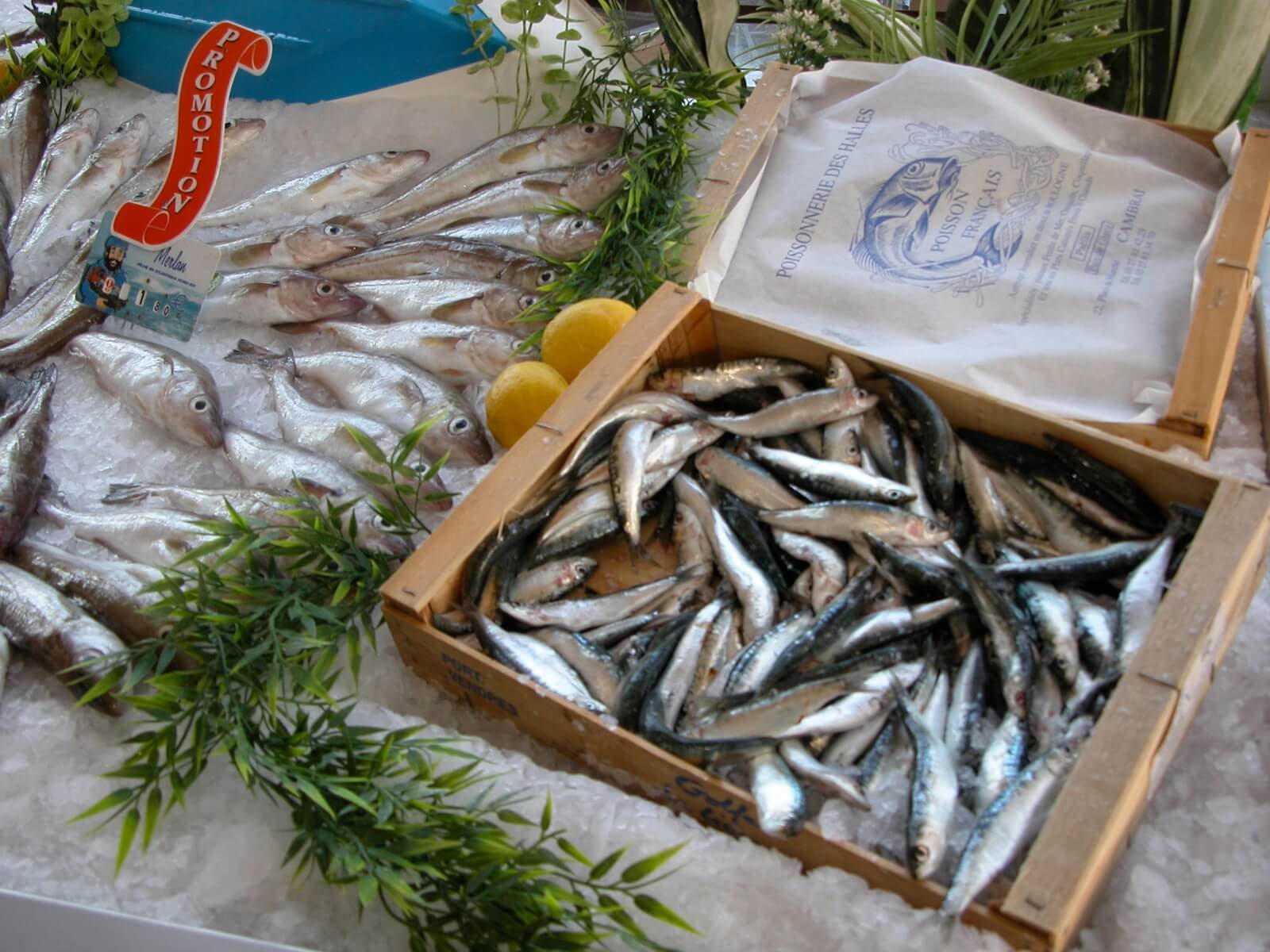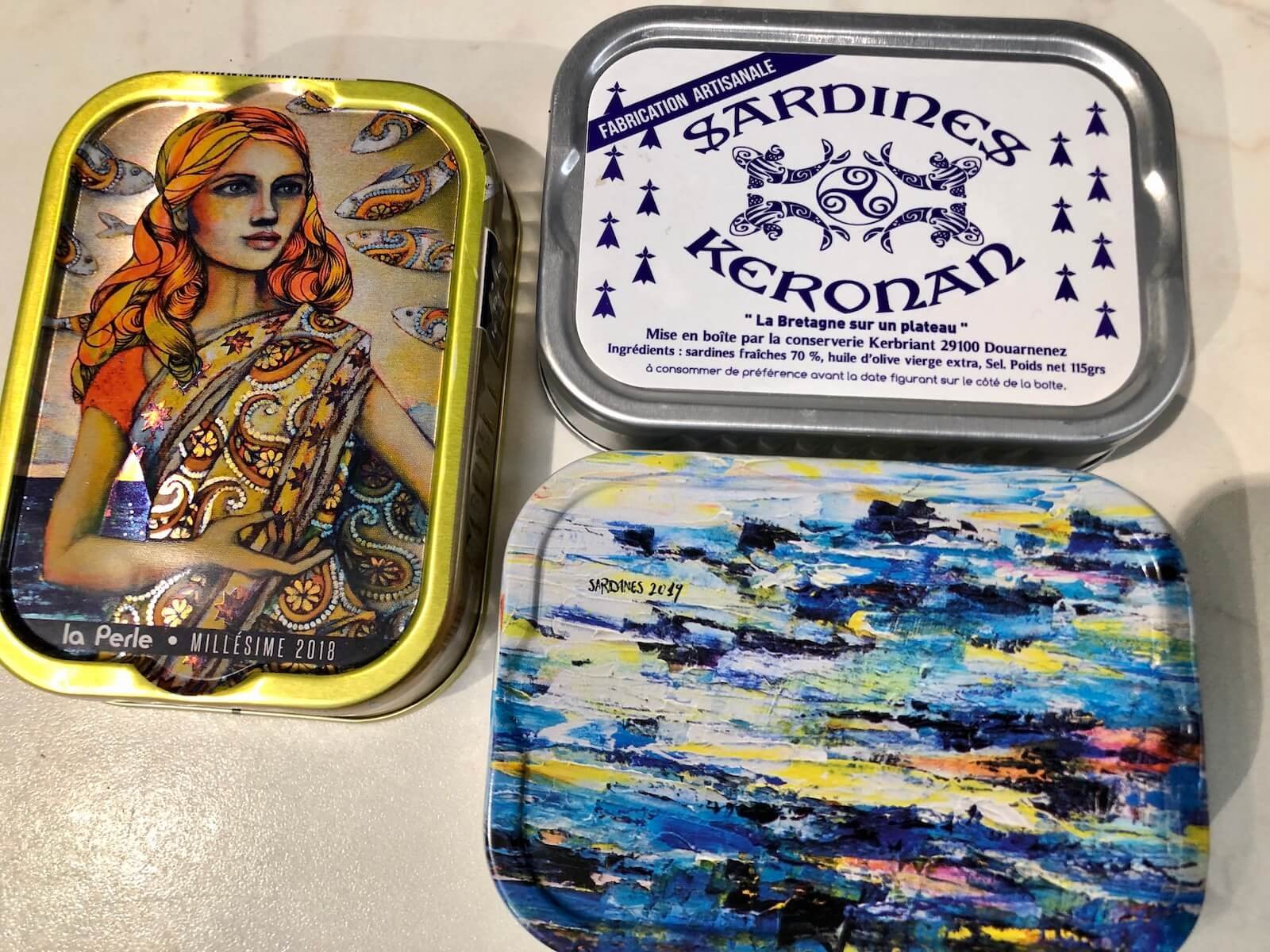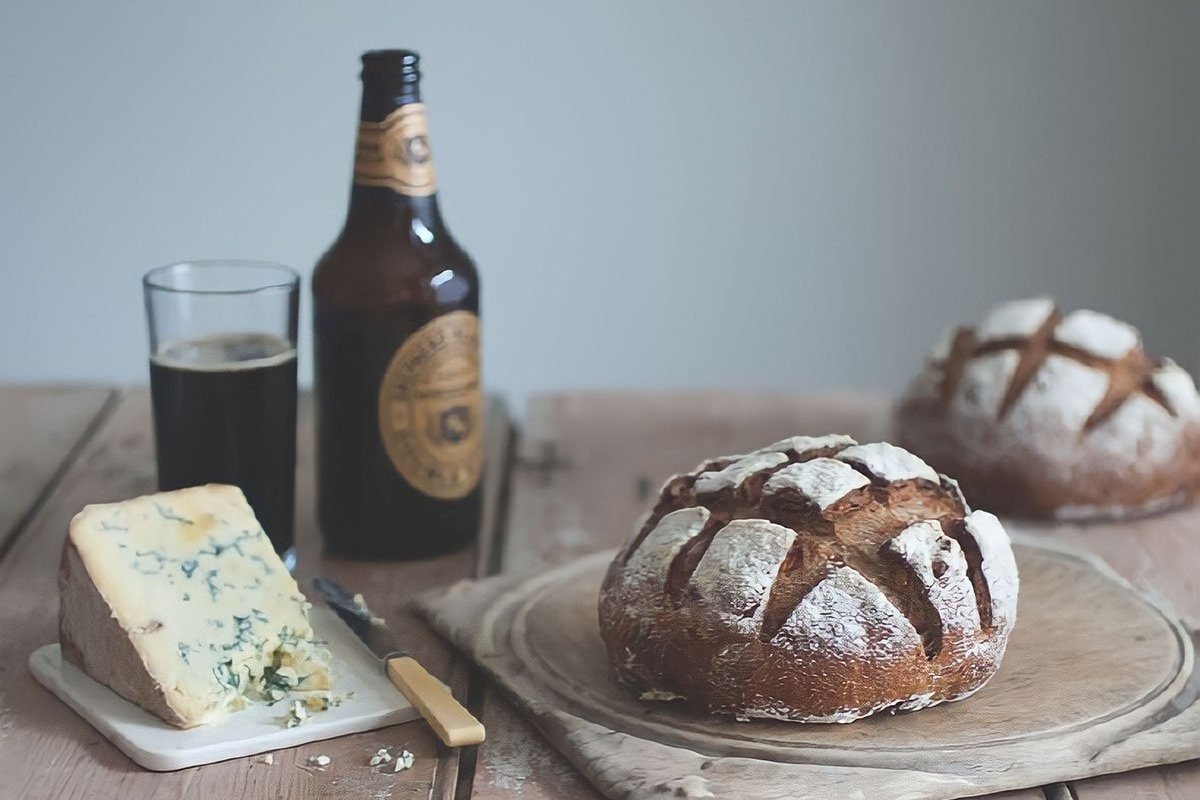Consuming Passions: Sardines
Lovers of sardines may also be interested in The Best (I)n Can, a cookbook from Portugal offering recipes to make use of different types of artisan canned fish including sardines, and much more besides.
In the latest addition to our Consuming Passions series, food writer and historian Di Murrell considers the humble sardine, a delicous treat in both it’s fresh and its tinned incarnations.
By Di Murrell
My love affair with fresh sardines began quite late on when we lived in France and, strangely enough, my fondness for the tinned sort was rekindled there too. Strange, because in both cases we were in regions that had little to do with the sea.
Those of us of a ‘certain’ age grew up in an era in Britain when virtually the only fish to be had came, in battered form, from the local ‘chippie’. I’m not sure that I knew of any other sort apart from the scary pilchard, solidly packed in its oily tomato sauce, that must be extracted from its tin with the tines of a fork. Bizarrely too, the sardine flirtation began not in some small French bistrot beside a sunlit sea, but at a boisterous celebration by the Portuguese community in the chilly town of Cambrai in northern France. Recruited post-war to work in the mines, while the coal is no more the Portuguese diaspora remains. Each year, over a long weekend in June, families gather, many in their national dress, for the feast of St. Antony, patron saint of Lisbon. People came from all over to enjoy the music and dancing of their native land. Long trestle tables with benches on either side are set out under the plane trees. Seats are soon crowded and huge amounts of sardines consumed, grilled over an open fire with platefuls passed along the tables, to be washed down with copious amounts of rough red wine. Though not quite Portugal’s national dish, the sardine, sprinkled with sea salt to crisp up the skin, drizzled with olive oil and grilled whole over hot coals is the quintessential taste and smell of a Portuguese summer; a waft from the bbq enough to reduce grown men, far from home, to tears. At Cambrai, the feast continues all week-end - the sardines never run out and everyone always has room for just one more.
We were made welcome, honorary Portuguese for the day, eating our way through the many so generously piled upon our plates. Served whole and ungutted, we watched our neighbours closely to discover how to deal with, what could easily end up as an unsavoury mess of bones and innards. Once cooked, the skin is crisp and salty and the flesh soft, sweet and succulent. Our new friends showed us how to deftly lift off the skin and meat, leaving bones and bits behind. The experts then flipped the fish over and repeated the exercise.
We soon got the hang of the eating part though grilling a sardine to perfection, a seemingly simple matter, requires much concentration and a modicum of skill. First, your sardine needs to be dry and spanking fresh, your olive oil fruity and your salt the flaky sort from the sea. Drizzle the oil over the fish and generously salt it on both sides. Make sure your grill/bbq is really hot; you want the heat to almost caramelise the skin. Only turn your fish once otherwise it might break or tear open. Cook each side for around three minutes or until the skin is nicely crisp. Place on a slice of fresh bread; this will absorb the juices and oil from the fish. Finish with a squeeze of lemon and take a bite of heaven.
It’s hard to better this way of cooking the humble sardine - yet its global presence means there are any number of culinary ‘riffs’ on this basic theme. Here are just a few of my particular favourites from around the world.
From Italy comes simple but tasty Baked Sardines from Valentina Harris’s ‘Italian Regional Cooking’.
Or from Morocco this delicious snack of ‘Paper Bag Sardines in Mighty Spice Express Cookbook by John Gregory-Smith.
And I love this recipe for Tangier-Style Fresh Sardines with Charmoula from Paula Wolfert’s Mediterranean Clay Pot Cooking.
By way of contrast to the Mediterranean style, from The Netherlands try Herring Salad with Beetroot and Vodka from Home Made by Yvette van Boven, but substituting sardines for herring?
Few things beat this Turkish standard, Stuffed Sardine with Pine Nut Sauce from Ghillie Basan’s Classic Turkish Cooking.
From fresh to the tinned variety is but a short step and one I took, somewhat improbably, in the town of Chagny in Burgundy. Before I forget, here’s a little snippet worth filing away: the French rarely have separate grills in their cookers, so are largely deprived of all those lovely toasted things we rather take for granted: tomatoes, cheese, and, of course, tinned sardines. French dinner guests become quite excited when their starter is a mish-mash of sardines, chopped gherkins, capers and parsley, flashed under the grill and served on toast.
Meanwhile, back in Chagny, where we happened to be one Saturday shopping in the market, on walking past a fishmonger’s shop I was transfixed by a large vending machine next to its entrance. For five euros one could choose from a selection of eight different tins of sardines. How beguiling the notion that the owner thought the citizens of Chagny, a small though charming town, should have 24-hour access to a tin of their favourite sardines. They must be true aficionados here, I thought, or perhaps so pressing was the craving of local ladies ‘enceinte’ for a midnight sardine snack, the canny fishmonger had spotted a marketing opportunity and had supplied their weary husbands with an easy solution. Whatever the reason, it was this sardine machine that caused me stop, and wonder, and draw me in through the open door.
Inside, I met Monsieur Prigent, owner of ‘Poissonnerie Keronan’, a veritable cathedral dedicated to Saint Sardine and, in particular, to those from Brittany. He explained that his family had been Breton fishermen for many generations and it was only true love that had brought him so far from home to settle in Chagny with his Burgundian bride. What better way to hold onto his own familial links than to open a fish shop and indulge in his passion for the little sardine? He says their quality varies from year to year and I must regularly invert my stored tins. He has so many stories to tell and within his shop, an abundance of tins are arranged like a miniature art exhibition. He chose three of his favourites for me, each one, like bottles of fine Chablis, (the only wine, he assured me, one should ever drink when eating sardines), was of a particular vintage. He suggested inviting friends round for a sardine tasting: open all three tins, then, as with a fine wine, roll a morsel of each, in turn, around in the mouth, prod it a little with the tongue, savour the flavour, compare and contrast; mark it for firmness of flesh, degree of fishiness; quality of the oil. I imagined the scene - a normal event in his world perhaps, but a touch bizarre in mine.
In pursuit of my newly aroused interest in this little fish I was moved to do some research. I read that a sardine is a member of the herring family. It is an oily fish that can be pickled, grilled, smoked and preserved in tins. I learn too that a pilchard is just an overgrown sardine that has lost its youthful innocence. Clearly there is much to know. For my part, I can’t wait to return to Monsieur Prigent’s shop in Chagny, there to immerse myself in his joyful celebration of all things sardine. In the meantime, I am finding any number of simple ways to enjoy the contents of that little tin.
Tinned sardines are easily prepared and the changes rung in many ways. For instance, by spicing up with a little curry flavouring for an Indian slant or a North African twist with some charmoula and preserved lemon. A little imagination is the best ingredient here, for example:
Try the Sardines Cured in Vine Leaves in Honey & Co. by Sarit Packer and Itamar Srulovitch for a great starter.
More familiar is dear old Keith Floyd’s take on ‘Salad Niçoise’ in his Floyd on France.
A sauce that I use with all sorts of pan-fried fish dishes appears in Alan Davidson’s Mediterranean Seafood in his recipe for Grilled Bluefish with Mustard Sauce and Sour Cream.
Finally, for those wishing to learn more about this little fish in all its guises, one can do no better than turn again to Alan Davidson, this time to the entry on Fish in his brilliant compilation of all things edible: the Oxford Companion to Food.
More Consuming Passions
Ramona Andrews on a tasty Middle Eastern favorite
Drinks writer Laura Hadland celebrates the darkest and most intensely flavored of beer styles, with countless culinary uses
ckbk co-founder Matthew Cockerill on the annual ritual of making traditional Seville orange marmalade








